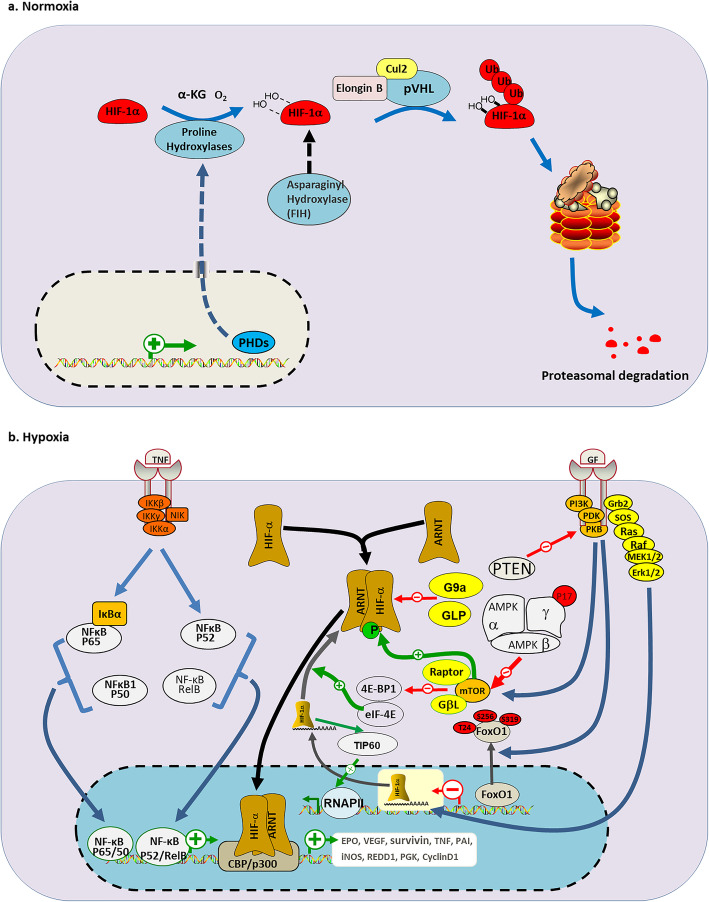Fig. 1.
Canonical and non-canonical regulation of HIF signaling. a Oxygen- dependent regulation of HIF-α. Under normoxic condition, the ODD module within HIF-1α will be degraded via binding to VHL E3 ubiquitin ligase complex which consisting of pVHL, Cullin 2 (Cul-2) and Elongin B. This process is mediated by ubiquitin-proteasome pathway, which α-ketoglutarate-dependent PHDs catalyze the hydroxylation of ODD domain which is recognized by VHL, eventually leading to proteasomal degradation of HIF-α. More, factor inhibiting HIF (FIH) inhibits the binding of p300 to HIF-α by hydroxylating asparagine residue within C terminal domain, which play a role of inhibition on HIF-α activity. b Regulation of the HIF pathway at mRNA and protein level. In hypoxic conditions, inhibition of PHDs promote the heterodimer formation consisting of HIF-α and ARNT. Extracellular signaling TNF-α stimulates I-κB kinase (IKK) complex which is comprised of IKKα and IKKβ, and other normal TNF signaling (NIK), which contribute to p65/50 complex and p52/RelB complex formation. Many other components NF-κB together activate target genes, including HIF-α, and further induce inflammation. More, PI3K, PDK and PKB activation induced by growth factors (GFs) activates mTOR pathway results in elevated HIF-α transcriptional activity. And phosphorylation of FoxO1 PI3K/PKB, which is transferred from the nucleus to the cytoplasm, prevents FoxO1 from acting on HIF-α. G9a/GLP methylates HIF-1α protein and inhibits HIF-1α activity within solid tumors, making it unable to bind to the hypoxic response element (HRE) of its target genes, resulting in inhibition of the downstream HIF pathway. More, HIF-1α acts on TIP60, which leads to chromatin histone acetylation and then to the activation of polymerase II, which ultimately activates HIF-1α target genes transcription. IκB, nuclear factor of κB inhibitor, alpha; IKK, IκB kinase; 4EBP1, eukaryotic translation initiation factor 4E-binding protein 1; eIF-4E, eukaryotic translation initiation factor; GβL: G protein beta subunit-like; Grb2: growth factor receptor-bound protein 2; EPO: erythropoietin; PAI: plasminogen activator inhibitor; iNOS: nitric oxide synthase; REDD1: regulated in development and DNA damage response 1; PGK: phosphoglycerate kinase

